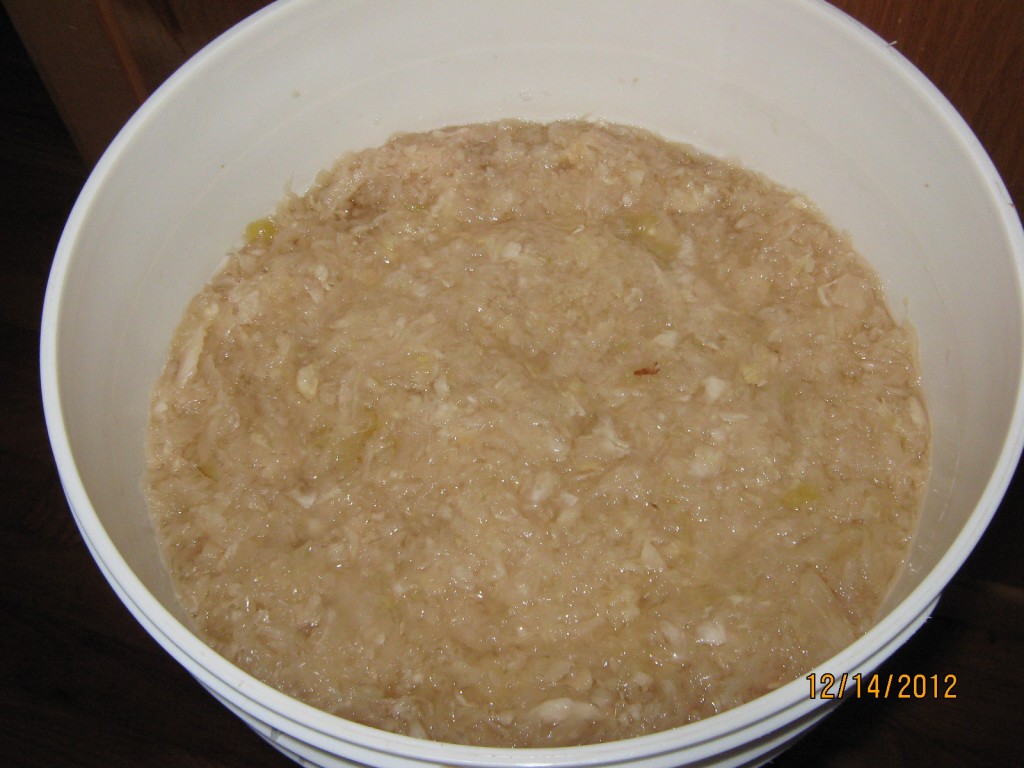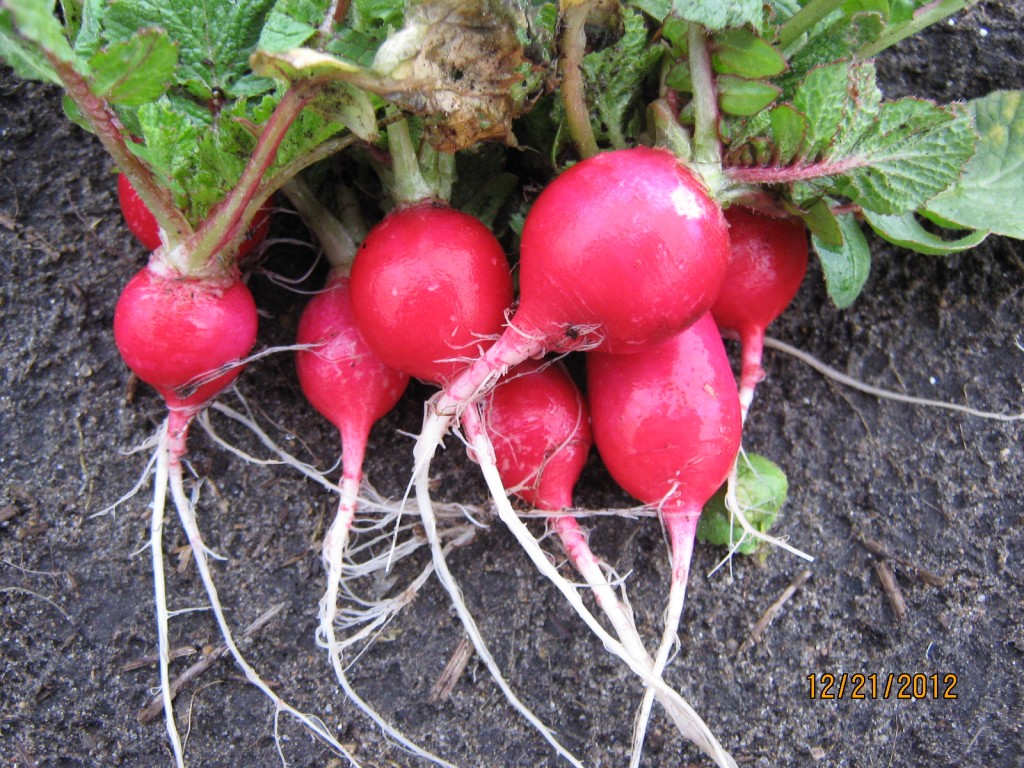Sometimes it feels like I’m still gardening even though the growing season is over.
For example, I’ve been tending my batch of sauerkraut for nearly a month now. Every couple of days I check it to make sure everything’s going OK. The anaerobic bacteria that ferment the cabbage can’t tolerate air so, I need to make sure all of the cabbage is covered completely with cabbage juice.
Mold likes to grow on the surfaces of the crock — or food-safe plastic pail — and the plates I use to cover the kraut. Mold has to be cleaned off as it appears. It’s sort of like removing weeds from a garden as they start to grow. The mold is not only unappetizing, but it can spoil the kraut too.
Now that it has fermented for a while, I harvest a smaller layer of kraut every time I check it. If a minuscule amount of mold or aerobic bacteria try to get started there, it gets removed. Of course, I throw out any that is spoiled.

It took 12 heads of cabbage from my garden to make five gallons of sauerkraut.
So, I’m tending a garden that has billions and billions of probiotic bacteria and they need to be well cared for.
I made my first batch of sauerkraut way back in 1978. It was so successful that I’ve continued to make it ever since. It’s something I look forward to every fall.
I eat my sauerkraut raw, straight from the crock. It has a satisfying crunch and a tangy flavor that is different with each batch. Now, if I cooked it, I’d kill all of those probiotic bacteria I’ve been nurturing.
By the way in my Polish family, everyone calls it kapusta, not sauerkraut.
Bob

